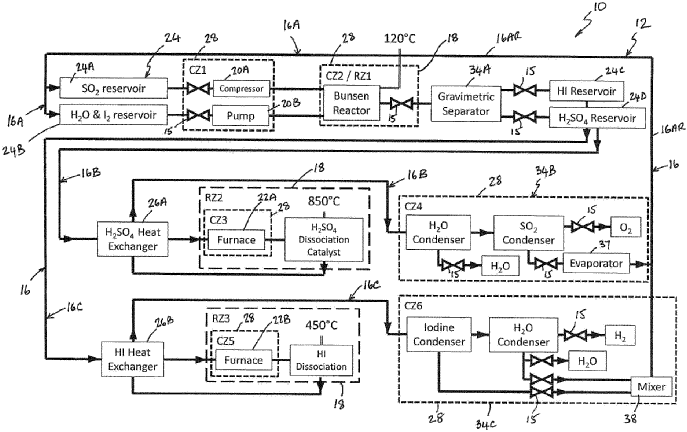A recent patent filed by CATAGEN LIMITED, introduces an innovative system designed to efficiently produce hydrogen from water using a thermochemical cycle, such as the sulphur-iodine cycle.
At the heart of the patented system is a reactor uniquely designed with multiple reaction zones. These zones are strategically interconnected through a fluid circuit, enabling a seamless flow of reactants and products between them. This design allows reaction products from one zone to serve as reactants for another, essentially creating a self-sustaining cycle. Furthermore, the reactor is constructed in a way that facilitates the reuse of heat generated within the reaction zones, optimizing the energy consumption of the entire process.
A key feature of this patented system is its emphasis on efficiency. The interconnected fluid circuit allows for the recirculation of reaction products, meaning that materials produced in downstream zones can be recycled back into upstream zones. This recycling process minimizes waste and ensures that reactants are utilized to their fullest potential. By repurposing both the reaction products and heat, the system not only conserves resources but also reduces the overall environmental footprint of hydrogen production.
The significance of this patented system lies in its potential environmental and economic benefits. By improving the energy efficiency of hydrogen production, the system could lead to reduced operational costs and make hydrogen a more competitive alternative to fossil fuels. Additionally, the efficient use of reactants means less natural resource consumption, contributing to more sustainable industrial practices.
Stay updated on the latest in energy! Follow us on LinkedIn, Facebook, and X for real-time news and insights. Don’t miss out on exclusive interviews and webinars—subscribe to our YouTube channel today! Join our community and be part of the conversation shaping the future of energy.
